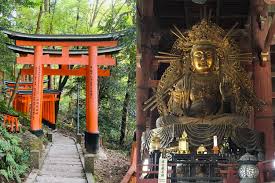Reference from the Agency for Cultural Affairs
- English subtitles -
Japanese characters
We will study three things here
- Character type
- Number of characters
- How to write letters
First is the type of character
There are 3 letters in Japanese, Hiragana, katakana and kanji.
Let’s write Japan in hiragana and katakana kanji.
First is hiragana
Next is katakana
And kanji
Hiragana and katakana represent sounds.
Each character has no meaning.
Katakana is mainly used for words from foreign countries such as coffee and personal computers.
Kanji has a meaning.
Take a look at this kanji, for example. “木”
This is read as “ki”
And it has the meaning of “tree”.
This kanji is read as “Tsuki”
The meaning is “Moon”
In other words, you can guess the meaning of the word by looking at the kanji.
Hiragana and Katakana have only one sound.
However, there are more than one way to read Kanji.
For example, “木(ki)” can be read as “moku” or “me”.
“月(Moon)” is also read as “gatsu” or “getsu”.
And in Japanese, when writing sentences, we use hiragana, katakana and kanji together.
Let’s see this sentence for example.
“Mr. Yamada bought a personal computer last week.”
There are hiragana, katakana and kanji.
- Japanese subtitles -
日本語の文字
ここでは3つのことを勉強します
- 文字の種類
- 文字の数
- 文字の書き方
まずは文字の種類です
日本語には文字が3つあります。
ひらがな、と、カタカナ、と、漢字、です。
日本語を「ひらがな」「カタカナ」「漢字」で書いてみましょう。
まず「ひらがな」です
次に「カタカナ」です
そして「漢字」です
ひらがなとカタカナは音を表します。
一つ一つの文字に意味はありません。
カタカナはコーヒー、パソコンなど主に外国から来た言葉に使います。
漢字には意味もあります。
例えばこの漢字を見てください。 「木」
これは、「き」、と読みます
そして「tree」と言う意味を持っています。
この漢字は「Tsuki月」と読みます
意味は「Moon」です
つまり漢字を見ればその言葉の意味が推測できます。
ひらがなとカタカナは1つの音しかありません。
しかし漢字は読み方が1つ以上あります。
例えば「木(き)」は、「もく」、「ぼく」、と言う読み方もあります。
「月(つき)」は、「がつ」、「げつ」と言う読み方もあります。
そして日本語では文を書くときひらがなカタカナ漢字を一緒に使って書きます。
例えばこの文を見てください。
「山田さんは先週パソコンを買いました。」
ひらがなとカタカナと漢字がありますね。
The Agency for Cultural Affairs assists programs that offer Japanese language education to foreign residents through the Japanese Language Learning Project for “Foreign Nationals as Residents” in Areas with Limited Access to Language Classes. This video was developed and launched by them in June 2020 to enable remote learning of Japanese that is rooted in real-life situations. It is for free and encourages learners to view them. It’s very concise and easy to understand. For those who haven’t seen it yet, I’d like to continue to introduce it.
If you have any questions, ask them for free! ➡ Japanese Question Form

A simple subscription system
簡単な受講システム
HH JapaNeeds’ tutoring lessons are a subscription system, so there are no complicated reservations or payments.
You can study with your teacher for 5 hours a month, for example, once a week for 60 or 90 minutes, depending on your convenience. You can schedule directly with your tutor via email or phone.
You can even take a break during busy months.
Tutor’s age:
The majority of tutors are in their 20s to 50s. Some of our tutors are 60-year old veterans and some are 16-year old high school students. Please let us know your preferred age.
Tutor’s gender:
More than 80% of our tutors are female. If you would like a male tutor, please let us know when you register.
Lesson Contents:
The most popular lesson contents are: 1, Daily Conversation, 2, JLPT Preparation, 3, Business Conversation, and 4, Kanji, in that order.
The HH JapaNeeds Team
Your tutor. Your time. Your location.

5 reasons why many Japanese people can’t speak English?
In Japan, English education has been provided from junior high school for a long time. English classes are organized on

Religion -宗教-
Buddhist statues in Japan Regarding Japanese religion, there is an idea to grasp the characteristics of

Japanese Young People’s Views on Love and Marriage
Love is something that people all over the world do, and the budding of love has created many dramas between

What is the meaning of “Gen-wo-katsugu: 験を担ぐ”? Gen = auspiciousness?
Do you have the concept of engi in your country? In Japan, we value the concept of karma so much





